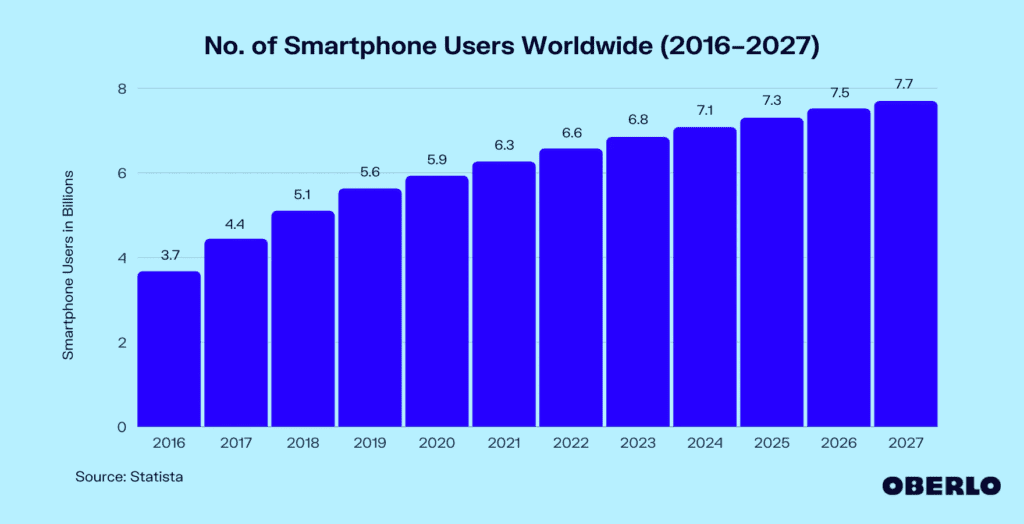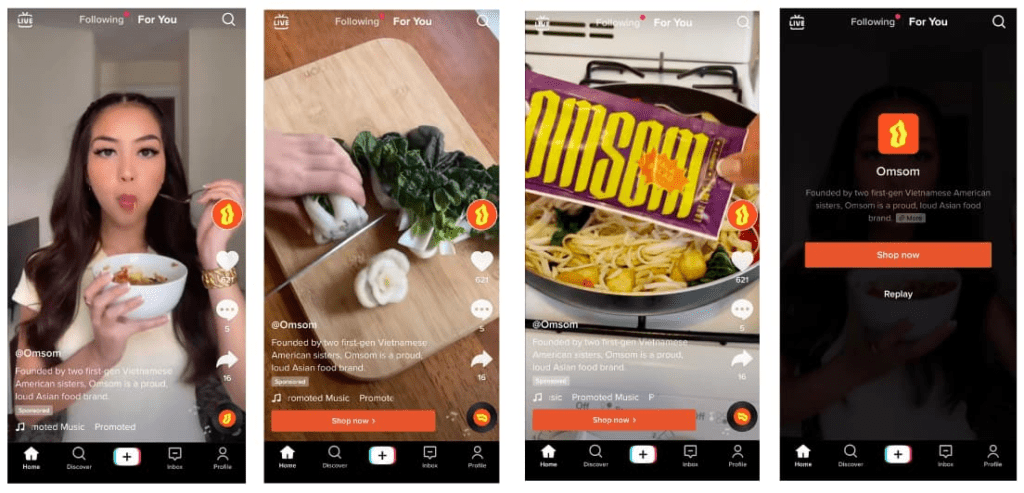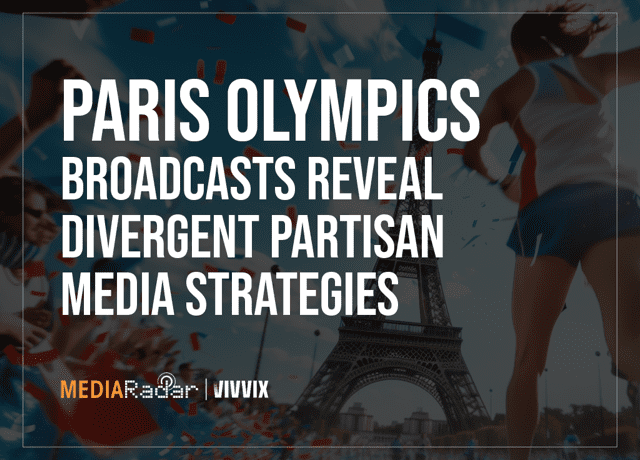Advertiser spend on native advertising continues to rise. Native advertising spend increased by 37% in 2021 and is expected to surpass $98b this year.
It’s become widely popular for a variety of reasons, but one reigns supreme: consumers don’t really mind them.
While other ad formats can be jarring and intrusive, the natural feel of native ads makes them particularly appealing to consumers. In fact, 68% of consumers trust native ads in an editorial context, compared to 55% of ads across major social media platforms.
Native advertising’s surge has extended to offline environments as well. On top of the many formats of native advertising that appear online, we’ve seen native ads on the subway and at sporting events.

The main fact is, native advertising is weaving its way into every form of consumable content, online or offline.
In considering the upward trend of native advertising, let’s look at the unique innovation we’ve seen—and what we can look forward to in 2023 and beyond.

What’s Native Advertising?
Native advertising is paid content that matches the look and feel of the unique environment in which they’re delivered. Said another way, native ads feel natural and not jarring. Nearly every online ecosystem offers native ads, including social media and YouTube, but the ad formats are making their way offline as well as advertisers look to escape the crowded online world.
Key Trends Transforming Native Advertising
There’s an endless stream of innovation reshaping the way publishers and advertisers alike use native advertising. The essential ones to keep in mind, however, revolve around video, branded content studios, mobile, and the ever-increasing push into all things transparency.
1. Video
Video has become the trend within most other trends. As new forms of ad inventory become available and increasingly popular, i.e., TikTok and augmented reality, video often seems to push that new inventory to the forefront. Spending on video advertising will reach more than $210b this year.
While native ads made a name for themselves across the social media world (more on that below), the trend to look out for moving forward is how they’re weaved into other platforms, including YouTube and other video-sharing platforms.
Take augmented reality ads, for example. More and more advertisers are using these future-facing formats to naturally bring their brands to the forefront of these futuristic experiences.
Native video ads are also appearing on platforms like Twitch as advertisers look to capitalize on the explosive growth of gaming in recent years. Twitch could tout an 82% YoY growth rate at the height of the pandemic.
Of course, native video ad inventory on legacy platforms like YouTube and across publisher sites is still in play. But as advertisers look for new ways to delight consumers, they’ll be increasingly pushed to up-and-coming ecosystems.
2. Branded Content Studios
Publishers have long relied on content—think catchy taglines and downloadable whitepapers.
That said, content has been spreading its wings through branded content studios.
Why? Two reasons:
- Declining ad revenue: Publications are struggling with declining ad revenue as Google, Apple, and others alter their approach to data.
- The demise of third-party cookies: Advertisers are trying to figure out how to deliver impactful campaigns without third-party cookies.
These forcing functions are pushing branded content to prominence and making them an increasingly appealing native advertising option for brands.
For publishers, it gives them an extra revenue stream. For brands, it gives them a seamless way to insert their brand in tandem with relevant content on some of the world’s biggest publications.
For example, Fast Company published a video and article showing how Pzifer uses data, AI and ML technology to increase innovation.
Example of branded content studios:
- The Trust
- FastCo. Works
- The Business Journals Content Studio
- Bloomberg Media Group
- Forbes Content & Design Studio
As long as consumers are fond of native ads—75% of consumers trust content and recommendations seen in an editorial environment—branded content studios will thrive.
3. Mobile & In-app
In Q4 2022, mobile devices accounted for nearly 60% of global website traffic, but that’s not surprising, given that 6.8b people own a smartphone worldwide.

There’s been a heightened focus on mobile in recent years for advertisers, and native advertising is no different. Both mobile and native continue to grow and continue to better engage viewers.
Vertical video, a major mobile advertising trend, has become an important native advertising format, as well. The continued rise of vertical video comes as advertisers look to maximize the real estate on mobile devices and deliver ads in a natural way (most people hold their phones vertically).
Native ads have also made their way to mobile apps. That’s far from a surprise, either. The global mobile app market was worth $206.85b in 2022 and is expected to grow at a compound annual growth rate (CAGR) of 13.8% between now and 2030.
App or no app, most publishers offering mobile content have added native to their inventory.
In-app native ads come in many forms. From the simple style of Facebook’s social media feed, to fun Snapchat filters, to Spotify display ads, the native advertising present within apps versus other media is perhaps the most innovative.

4. Ad Transparency
Native advertising has played an interesting part in the discussion surrounding transparency.
While native advertising tends to better engage the audience, anyone that feels duped by an advertisement will certainly not have a good affiliation with that brand. That “duped” feeling has been a core driver behind the GDPR, CCPA, and other privacy-focused initiatives to protect consumers from rogue ads.
That’s why the FTC has specific laws in place, requiring native advertisers to let viewers know that they are, in fact, looking at an advertisement. While that is obviously fair and necessary, more than anything, native advertising keeps the conversation of transparency moving in the right direction.
With such innovative ways of living within content, native advertising can never be too native, which is the general point.
This is a major point of innovation. Native advertising allows brands to live within content without disrupting the consumer’s experience.
At the same time, each consumer is fully aware that what they’re looking at is an ad. That is an impressive level of integration paired with a high level of transparency that will continue to make native ads a roaring success.
No, We Didn’t Forget Social Media
Native ads are synonymous with social media—as they should be. Facebook, Snap, Instagram, and Twitter have all made a concerted effort over the years to deliver ad experiences that “match” their unique environments. TikTok has done the same since bursting on the scene during the pandemic.

Native ads will always have a place inside social’s walls, especially on platforms popular with younger generations, like TikTok and Instagram. That said, their reign as the top dog appears to be over.
A study found that 21% of consumers plan to spend less time on social media, pointing to a growing preference for editorial-based and native experiences.
Advertisers are also waking up to the idea that native ads are simply more impactful elsewhere. In fact, native ads are 62% easier to understand than display and 31% easier to understand than ads on social.
Still, as long as social media users become attached and engaged with their feeds, these digital giants will remain at the heart of the native advertising evolution.
For more insights, sign up for MediaRadar’s blog here.


